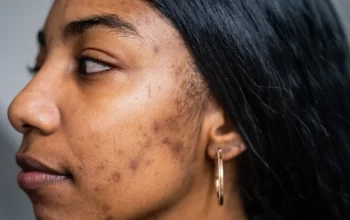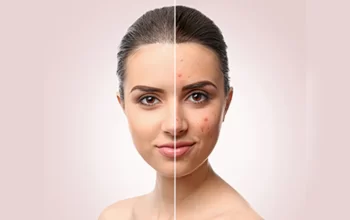Acne is a common skin problem that is defined by three main types. This condition develops when the pores of the skin become clogged with too much oil, bacteria, or dead skin cells. Sometimes it may be caused by hormonal changes or by genetics. However, if left untreated, acne can result in a wide range of different skin problems, including scarring and psychosocial distress.
The most common type of acne is acne vulgaris. The inflammatory process leads to the formation of cysts, which can become extremely painful. Another form of acne is known as nodular acne. Nodules are also large blemishes. Finally, a severe form of acne is called acne rosacea. This type affects the face only and is typically a problem for adults.
Inflammatory acne, the appearance of pimples depends on the severity of the infection. The skin produces oil, called sebum, which helps protect the skin and moisturize it. The glands may become blocked by dead skin cells and produce an excess amount of sebum. If the pores become blocked, sebum builds up and clogs them, causing a pimple. Acne vulgaris generally develops on areas with more oil glands, such as the face, neck, and shoulders.
Although there is no standardized grading system for acne, there are several guidelines available that help doctors differentiate between different levels of severity. The Global Alliance for Acne Treatment suggests that patients should be diagnosed based on the severity of the disease, and the type of lesions present. Acne vulgaris has multiple grades, which are grouped according to their location. Using an accurate classification can also help doctors decide which treatments to use.
While acne usually clears up in a few months, it can linger into adulthood. It affects predominantly males and females. Women commonly experience a flare-up a week before their menstrual period. Acne can also be triggered by irritants such as hair products. Some women use contraceptives and are cured of acne completely on their own.
As far as treatments go, success is usually measured in the resolution of existing acne lesions and the prevention of new ones. Successful treatment usually takes two to three months of consistent treatment. Since everyone responds differently to medication, treatment plans may change as necessary. It may require a different regimen for acute flares and long-term maintenance. But even with this, many patients find their acne condition significantly improved with a customized treatment plan.
The most severe form of acne is nodules, which are larger, painful, and inflamed blemishes. Nodules are more serious than they look. They develop when clogged pores become infected and swell up beneath the surface of the skin. Nodules can be painful and may require surgical treatment. If left untreated, nodules may leave permanent scarring.









